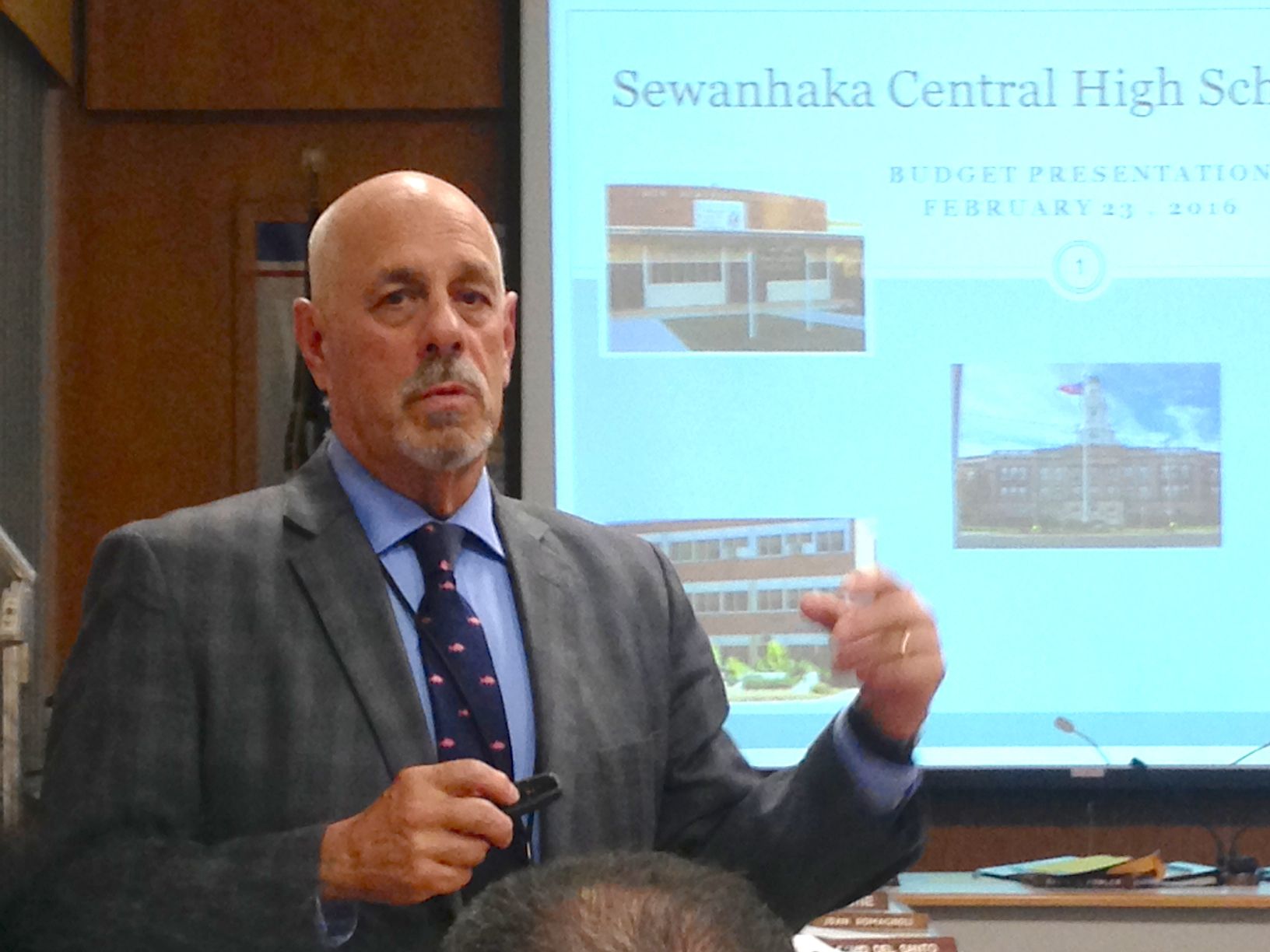The Sewanhaka Central High School District will not have to cut any programs despite a tight tax levy increase, Superintendent Ralph Ferrie said Tuesday.
The district can only raise its levy 0.3 percent under state tax cap law this year, Ferrie said, which is “not a significant increase whatsoever” considering the size of its $183.1 million 2016-17 budget.
But decreases in the district’s contributions to state pension funds, lower capital expenses, state aid and surplus money will help offset the restriction, he said.
“We have said that this day was going to come, and we positioned ourselves to not be put in a situation where we’re going to have to chop programs,” Ferrie said at the Feb. 23 monthly school board meeting.
Sewanhaka has seen recent drops in enrollment — it fell by about 100 students this year — Ferrie said they don’t translate into significant budget savings because they’re spread out over five schools and six grade levels.
Significant savings came in the capital projects budget line, he said, because Sewanhaka’s bond initiative is covering much of the district’s building projects. District projects this year will require $262,395 in funding for some renovations.
The decreases in pension fund contributions also created a large savings, Ferrie said.
The budget would also apply $6 million in budget surplus funds, he said, because it replenished much of the $5 million in surplus money it budgeted last year.
Ferrie credited Sewanhaka’s principals and officials with working to keep the budget tight.
“There have been a lot of sacrifices in terms of things, so I think we’re going to be okay,” he said. “But we still have some major goals that we’d like to achieve.”
While the district’s state aid increased $2.69 million this year, $1.67 million of that was for building reimbursements to which it was entitled, Ferrie said.
Ferrie and other district representatives will travel to Albany next week to ask state officials to completely close the district’s gap elimination adjustment — money the state cut from school aid to close budget gaps in the wake of an economic downturn — which could net Sewanhaka an additional $1.6 million in aid.
If that money comes in, the district could potentially add some programs and staff, Ferrie said. But as the budget stands, he said, Sewanhaka is a “business-as-usual district.”
“It all depends upon state aid,” Ferrie said. “If we get that additional state aid, there are some things that I think, that the administration thinks, are important.”
They include a daytime alternative school program, hiring part-time athletic trainers for all five high schools and an evening facilities supervisor, and decreasing the amount of reserves allocated for the current budget, he said.
Sewanhaka school board President David Fowler said the fact that districts have to lobby the state for additional aid is “educational cannibalism,” but praised administrators for maintaining business as usual.
“We’re pleased that unlike past years, and many districts that I’ve heard of, we’re not looking at cuts to strike the 0.3-percent tax levy cap,” Fowler said.
The school board will hold another budget discussion March 8 before voting on the budget April 12.
The board also unanimously adopted Tuesday a final plan to give every Sewanhaka student a laptop or tablet over the course of three years using $3.2 million in state money from the 2014 Smart Schools Bond Act.
The plan, presented in January, calls for a five-year rollout of a “one-to-one” device initiative, with the district spending $800,000 of state money and $300,000 of its own expected savings in the first four years.
The district would front the cost of purchasing the devices with state reimbursement expected within 90 days, said Christopher Nelson, director of Instructional Technology & Student Achievement, last month.
Administrators will now submit the plan for state approval. The process of selecting devices to buy has begun, Nelson said Tuesday, with Apple so far leading the way to meet 42 weighted device criteria a district committee created.
One parent recommended holding off on purchasing the devices and rather spending the money on quality software and teacher training.
But the Smart Schools Bond Act stipulates districts can only buy hardware with the money, Fowler said.



